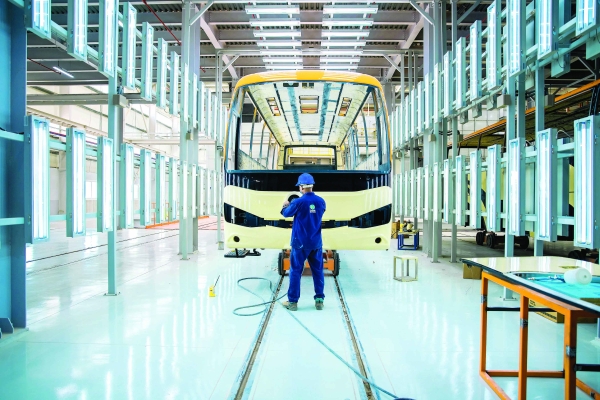Our Terms & Conditions | Our Privacy Policy
Oman’s strategic vision drives diversification and global investment appeal
MUSCAT: The Sultanate of Oman is making confident strides toward a comprehensive economic transformation, guided by Oman Vision 2040—its national roadmap to diversify the economy, attract foreign investments, enhance governance, and promote sustainability. A recent Oxford Business Group (OBG) report highlights the tangible progress being made across key sectors, positioning Oman as a rising regional and global economic force.
Qais bin Mohammed al Yousef, Minister of Commerce, Industry and Investment Promotion, emphasized that Oman’s investment strategy is built on modernizing the business environment, developing human capital, fostering innovation, and accelerating digital transformation. These pillars are the foundation of “Renaissance 2.0,” Oman’s bold economic transformation plan targeting emerging sectors such as manufacturing, logistics, mining, tourism, agriculture, fisheries, and renewable energy.
Al Yousef also underscored Oman’s strategic geographic advantage—serving as a trade gateway between Asia and Africa—supported by modern infrastructure, including efficient ports, highways, and industrial zones. According to World Bank reports, Oman leads the GCC in terms of fast-tracking import-export procedures, reducing shipping times by up to 40 per cent compared to regional peers.

Qais bin Mohammed al Yousef, Minister of Commerce, Industry and Investment Promotion.
Innovation is driving this transformation. Oman is advancing major initiatives such as green hydrogen production in Duqm, precision agriculture in Najd, AI-powered logistics, and smart tourism platforms—all hallmarks of its shift toward a diversified, knowledge-based economy.
Ibtisam bint Ahmed al Farooji, Under-Secretary for Investment Promotion, noted that Oman is increasingly attractive to foreign investors. Ranked fourth globally for foreign direct investment (FDI) appeal in 2023, Oman’s FDI inflows grew by 19.3 per cent between Q1 2023 and Q1 2024. Key investment partners include China—with RO 1.4 billion invested in 2023—alongside India, Japan, South Korea, and Denmark, which is partnering with Oman on the $6 billion Amnah Green Hydrogen project.
Oman’s economic diversification is further bolstered by the Oman Industrial Strategy 2040, which aims to double the manufacturing sector’s contribution to RO 10.8 billion and attract annual investments exceeding RO 1.9 billion. The industrial sector alone recorded GDP of RO 3.8 billion in 2023, while FDI in this sector surpassed RO 2.2 billion in early 2024.

Ibtisam bint Ahmed al Farooji, Under-Secretary for Investment Promotion.
The logistics and transport sector is a major growth driver. Key projects—like the Oman-Etihad Rail, Khazaen Economic City, and air/sea connectivity expansions—leveraged Oman’s strategic location to boost GDP contributions to RO 1.7 billion in the first nine months of 2024. By 2040, this is expected to rise to RO 13.8 billion, creating around 300,000 jobs. Reforms such as a new maritime law and the adoption of smart systems like the Port Community System have dramatically cut shipment processing times.
Meanwhile, Oman is advancing toward food security. By 2040, the goal is full self-sufficiency, with strong performance already in fish (162%), fresh milk (97%), and eggs (92%). The agriculture and fisheries sectors now employ over 139,000 people and are tapping into 1.4 million hectares of land using smart technologies and integrated approaches.
The mining sector is also gaining momentum, with GDP reaching RO 229.3 million in 2023 and mineral exports rising by 71 per cent. Oman is developing high-value projects such as a titanium dioxide plant and an aluminum wheel factory, while opening 110 new mining blocks. The sector benefits from robust legislation and infrastructure, encouraging both local and foreign investment.
Tourism, another pillar of diversification, recorded a 12 per cent increase in visitors in Q1 2024 compared to 2023. Oman aims to welcome 11 million annual visitors by 2040 through expanded visa access, strategic partnerships (e.g., with Saudi Arabia), and investment in ecotourism, culinary experiences, and heritage development—including plans to open 25 heritage sites for investment by 2025.
Urban development complements tourism growth. Oman’s real estate and city planning strategies include 18 initiatives tied to 16 priorities and 32 indicators. These aim to build sustainable, digitally integrated urban spaces that cater to rising populations and modern lifestyles.
While oil remains a vital part of the economy—contributing RO 7.2 billion to GDP in Q2 2024—Oman is investing heavily in renewable energy. Through Hydrom, the country targets green hydrogen production of 1 million tons by 2030, scaling up to 8.5 million tons by 2050. This output is equivalent to 80% of Oman’s current LNG exports.
Finally, digital transformation is a cornerstone of Oman’s future. With significant progress in 5G, cloud computing, and data infrastructure, Oman is positioning itself as a regional tech hub. These advancements support the digital economy’s growing contribution to GDP and align with Vision 2040’s broader goal of sustainable, innovation-led growth. — ONA
[ad_1]
Images are for reference only.Images and contents gathered automatic from google or 3rd party sources.All rights on the images and contents are with their legal original owners.
[ad_2]



Comments are closed.